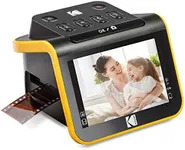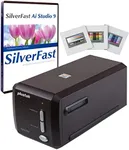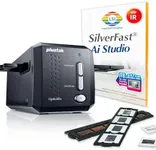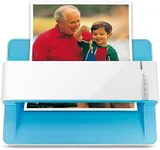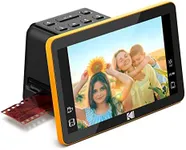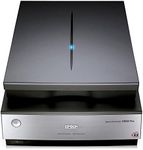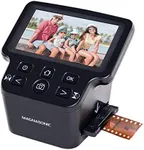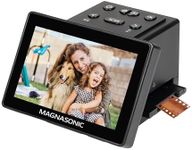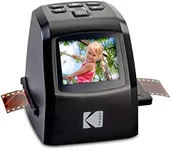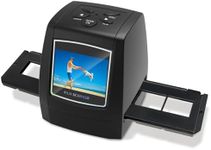Buying Guide for the Best Slide Scanners
Choosing the right slide scanner can be a daunting task, especially with the variety of options available in the market. A slide scanner is a device used to digitize slides, which are typically photographic transparencies. When selecting a slide scanner, it's important to consider several key specifications to ensure you get the best fit for your needs. Understanding these specifications will help you make an informed decision and ensure that the scanner you choose meets your requirements for quality, speed, and ease of use.ResolutionResolution refers to the amount of detail a scanner can capture, measured in dots per inch (DPI). Higher resolution means more detail and clarity in the scanned images. If you need high-quality scans for professional use or large prints, look for scanners with higher DPI, typically above 4000 DPI. For general use or smaller prints, a resolution between 2000 to 4000 DPI should suffice. Consider your end use of the scanned images to determine the appropriate resolution.
Color DepthColor depth indicates the number of colors a scanner can capture, measured in bits. Higher color depth results in more accurate and vibrant colors in the scanned images. For professional photography or archival purposes, a color depth of 48 bits is ideal. For everyday use or less critical applications, 24 bits may be sufficient. Think about the importance of color accuracy in your scanned images when choosing the color depth.
Scanning SpeedScanning speed is the time it takes for a scanner to digitize a slide, usually measured in seconds per slide. Faster scanning speeds are beneficial if you have a large number of slides to scan, saving you time and increasing productivity. High-end scanners typically offer faster speeds, while entry-level models may be slower. Consider the volume of slides you need to scan and how quickly you need the job done to determine the appropriate scanning speed.
ConnectivityConnectivity options determine how the scanner interfaces with your computer or other devices. Common connectivity options include USB, Wi-Fi, and Bluetooth. USB connections are reliable and fast, suitable for most users. Wi-Fi and Bluetooth offer wireless convenience, which can be useful if you prefer a clutter-free workspace or need to scan directly to mobile devices. Think about your preferred setup and how you plan to use the scanner when choosing connectivity options.
Software CompatibilitySoftware compatibility refers to the scanner's ability to work with various operating systems and image editing software. Ensure the scanner is compatible with your computer's operating system (Windows, macOS, etc.) and any software you plan to use for editing or organizing scanned images. Some scanners come with bundled software that offers additional features like dust removal and color correction. Consider your workflow and the software you use to ensure compatibility.
Ease of UseEase of use encompasses the user interface, setup process, and overall user experience of the scanner. Look for scanners with intuitive controls, clear instructions, and straightforward setup. Features like automatic slide feeders can simplify the scanning process, especially for large batches. If you're not tech-savvy, prioritize models known for their user-friendly design. Consider how comfortable you are with technology and how much time you're willing to spend learning to use the scanner.
